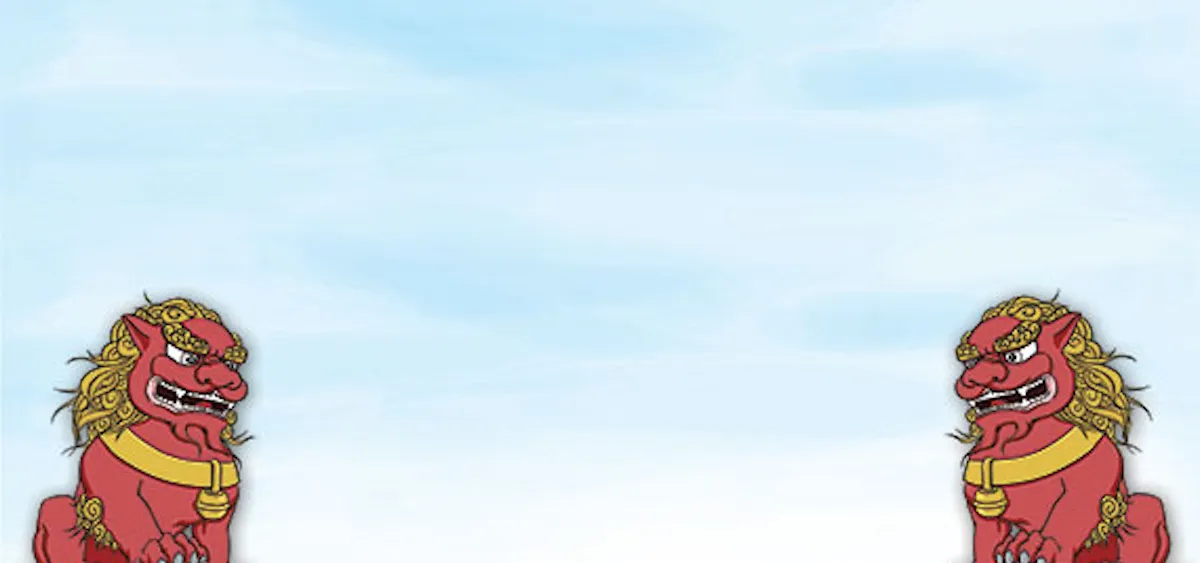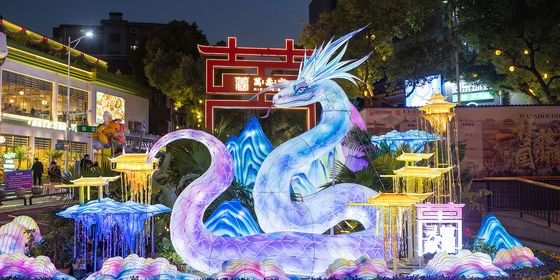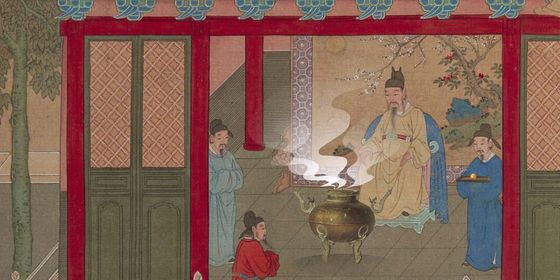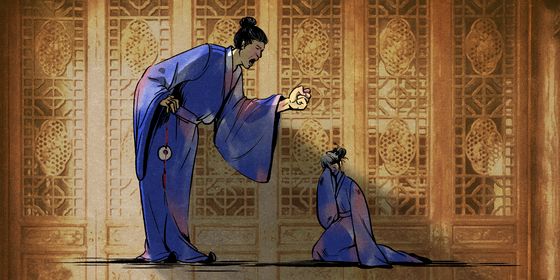The story behind China’s “Foo Dogs”
They sit in front of imperial tombs, palaces, and not a few Chinese restaurants. Guardians of stone, roaring silently for centuries. The lion is one of the most common and auspicious symbols found in traditional Chinese architecture. Yet lions have never been known to occur naturally in the wilds of China. Originally thought by the Chinese to be a mythical creature, the lion eventually became a highly sought after commodity in a cross-continental tributary trade in exotic animals, and remains a symbol of power and protection.
While not indigenous to China, the Asiatic lion once roamed over most of Southern and Western Asia. Stories of the majestic cat reached ancient China through intermediaries along what would become known as the Silk Road, and the word for lion in Chinese, shizi (狮子), is most likely derived from Indo-European languages and shares similarities with the Tocharian word for lion, secate, and the modern Persian term shiar, suggesting that the first stories and pelts of the lion were introduced to China by travelers from Central and Western Asia.
The first record of a live lion traveling to China appears in the History of the Later Han(《后汉书》). In 87 CE, envoys from the Parthian Empire brought gifts of exotic animals including lions, zebu, and ostriches to the court of Liu Da, Emperor Zhang of Han (汉章帝). A half century later, in 133, the ruler of Kashgar also paid tribute to the Han court with a gift of lions. Records from this period describe these magnificent and fierce creatures from the exotic and distant Western Regions(西域). Their arrival invariably attracted the attention of the residents in the Han capital. When the Mongolian khans ruled from Beijing (Yuan Dynasty, 1206 – 1368), they also enjoyed presents of lions sent to them from their fellow Mongol rulers in Western Asia. A famous 16th-century record of China travels published by the Persian trader Ali Akbar Khan describes Muslim traders traveling the Silk Road and bringing lions and other large cats to the court of the Ming Empire (1368 – 1644), and which also fetched a high price among Chinese traders in exotic species.
While the use of lions as guardians of tombs and temples predates the first records of actual lions arriving in China, these earlier representations were thought to depict a mythical creature. Earlier cultural depictions of the lion were often fanciful, with other animals or beasts added into the mix. The results were very different from the more realistic depictions which adorned contemporaneous Greek, Parthian, and Roman monuments. Even after actual lions had become a fixture of the tributary trade between Chinese empires and the civilizations of Central and Southern Asia, lion symbolism was frequently conflated with pre-existing denizens of Chinese mythology. The fifith-century monk Huilin believed that the lion was nothing more than the suanni (狻猊), who frequently appears as a mix of lion and dragon and is one of the nine sons of the dragon king.
Lions also played an important part of Hindu and Buddhist iconography. The Lion Capital of Ashoka, a pillar adorned at the top with a sculpture of four lions, is located at the Buddhist holy site of Sarnath. The pillar dates back to 250 BCE and is today the official emblem of the Republic of India. The Buddhist version of the lion became a part of the cultural landscape among Han Chinese. They were associated with the Bodhisattva Mañjuśrī and as guardians of the dharma.
Over the centuries, lions joined tigers as important symbols of fortune and power, and their forms, carved in stone, began to grace the fronts of temples, tombs, and palaces. Lions would usually be placed in pairs in the front of structures with the male lion on the left facing out and his female companion to the right.
There is also considerable variation in the depictions of lions throughout China. Lion statues in the south of China are often more fanciful, with adornments and decorative elements missing in their northern counterparts. The lions visage can be either that of fierce protectors or peaceful guardians. The most famous examples—those which today still stand sentry in the imperial palaces of Beijing—are shown with the male lion’s right paw placed on an embroidered ball symbolizing the universal rulership of the emperor. Under the female’s left paw is a cub, representing the continuity of the imperial line. The gender dynamics of the palace within reflected neatly in the symbolism of the lion guardians in front.
A common misconception is that the guardian lions of China are statues of dogs or dog-lion hybrids. While later depictions of lions eschewed some of the more fantastic elements of the time before lions came to China, statues still tended to reflect the lion as a symbol rather than a realistic portrayal of a lion’s form. The claws, eyes, and teeth tended to be exaggerated. Both male and female lions are maned. The male especially is often portrayed as heavily muscled and barrel chested with powerful forepaws and relatively small hindquarters. Along with a tail that is frequently shorter in proportion to an actual lion and curls up not unlike many breeds of Chinese dog, a case of species confusion is understandable.
“The Stone Lions of China” is a story from our newest issue, “Family”. To read the whole piece, become a subscriber and receive the full magazine. Alternatively, you can purchase the digital version from the iTunes Store.












